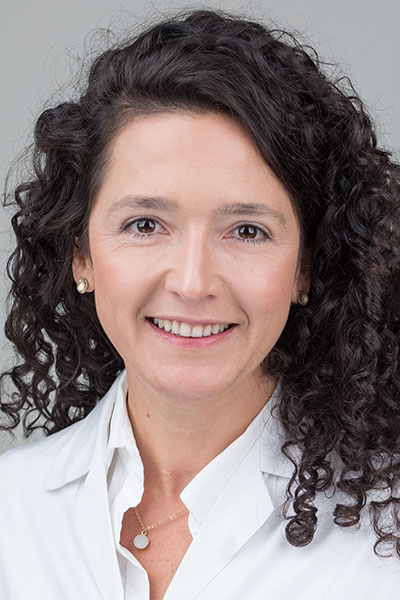Increased lung cancer screening with computed tomography (CT) over the past decade has resulted in the identification of incidental interstitial lung abnormalities (ILAs) in patients with minimal or no respiratory symptoms.
Although many ILAs do not require intervention, clinicians must analyze clinical and radiographic features to determine which patients may need regular follow-up. During the CHEST 2022 session, Interstitial Lung Abnormalities: When are they Incidental? When are they ILD?, on Monday, October 17, experts explored these questions in an effort to help clinicians identify high-risk patients.
Identification of ILAs is relatively new, according to Sean J. Callahan, MD, assistant professor of medicine in the division of pulmonary and critical care at the University of Utah. ILAs used to be called many things, he said, such as early interstitial lung disease (ILD), preclinical ILD, or subclinical ILD. Learn more about CHEST’s efforts to improve the time to diagnosis for ILDs with the Bridging Specialties™ initiative.
Quite a few definitions of ILA exist within the literature. Often, ILAs are defined as subclinical, high-density, interstitial abnormalities found by coincidence on partial or complete chest CT examinations, Dr. Callahan said. ILA criteria include being nondependent; including more than 5% of any lung zone; and including cysts, honeycombing, traction bronchiectasis, reticulation, or ground glass.
“One reason to be up to date on [ILAs] is that this is a very active research field,” Dr. Callahan said. “It is very important to note that ‘ILA’ can mean a lot of things.”
Patients found to have an ILA could show minor abnormalities or could already have ILD.

Defining and diagnosing ILAs
According to Dr. Callahan, there is work being done to better refine the definition of ILAs and develop algorithms that incorporate clinical and radiographic features into diagnosis. Advanced age, prior smoking history, and elevated BMI are all associated with higher risk for ILAs.
“This really matters,” Dr. Callahan said. “If you have someone with an ILA, the chance that they are going to do worse is pretty significant.”
To support this, he cited the AGES-Reykjavik Study, which showed that 10% of patients with serial CT scans in the study had an ILA on at least one CT scan; 73% of these patients had progression of ILAs by the time of the second CT scan. Presence of an ILA was associated with higher rates of death over the 5-year study period. When further examined, ILAs are often indications of something worse, Dr. Callahan said.
There are several radiographic features associated with ILA imaging progression, including nonemphysematous cysts, abnormalities predominantly located in the lower lobes, traction bronchiectasis, and subpleural reticulation. Definite fibrotic features—such as honeycombing—are associated with worse prognosis. Conversely, centrilobular nodules often get better.
Guidelines related to ILAs recommend repeat CT scans. If a patient has sequential worsening of an ILA, they tend to do worse over time: higher mortality, more symptoms, and diminished exercise capacity.
In addition to radiographic features, there are also clinical predictors of ILA progression, Dr. Callahan said. These include older age, male sex, smoking history, elevated BMI, and MUC5B promoter polymorphism risk allele.
Dr. Callahan recommended that clinicians risk-stratify patients based on imaging and clinical features and repeat scans if concerning features are present.
“Take the proverbial pulse of the situation,” Dr. Callahan said. “Is this really an ILD? If you go looking really hard in applying some conservative metrics, a lot of these patients are going to truly have an ILD, it’s just subclinical…Conversely, if it’s a minor finding, they don’t have symptoms, they don’t have impure PFTs [pulmonary function tests], you have time.”
Dr. Callahan pointed attendees to guidance published by the Fleischner Society in 2020 to aid clinicians in evaluating and managing patients with ILAs.

Refining imaging techniques and practice
During the session, Dr. Callahan was joined by Juliana Bueno, MD, associate professor of radiology and thoracic imaging at the University of Virginia Medical Center, who discussed radiographic features that suggest progression of ILD and used imaging examples to show ILA categories such as nonfibrotic and fibrotic ILA, as well as images demonstrating ILA progression.

Finally, Jonathan H. Chung, MD, professor of radiology and section chief of cardiopulmonary imaging at the University of Chicago Medicine, presented cases to illustrate how to approach stable vs progressive ILAs. His presentation and discussion of these images were meant to demonstrate that the qualitative assessment of CT imaging is likely not going to answer which patients will progress.
Instead, Dr. Chung said, new techniques are necessary to tease out stable ILA from progressive ILA. One thing that may aid in this process is radiomics/artificial intelligence.
“We throw a bunch of CT scans that have answers into some sort of algorithm, it creates a model, and then it analyzes CT [scans] for us,” Dr. Chung said. “The problem with radiologists and the pulmonary community is that we’re biased. We think we know the answer already. So it’s hard for us to open up our minds.”
In addition, other types of imaging, like molecular or xenon imaging, may tease these out and aid in diagnosis in the future.
This session was supported by an educational grant from Genentech, a member of the Roche Group, and by Boehringer Ingelheim Pharmaceuticals, LLC.
Join us at CHEST 2025
Save the date for the next Annual Meeting, October 19 to 22, 2025, in Chicago. CHEST 2025 will explore the latest advancements in pulmonary, critical care, and sleep medicine, with a focus on innovation and the future, just as the city itself embodies progress and reinvention.





